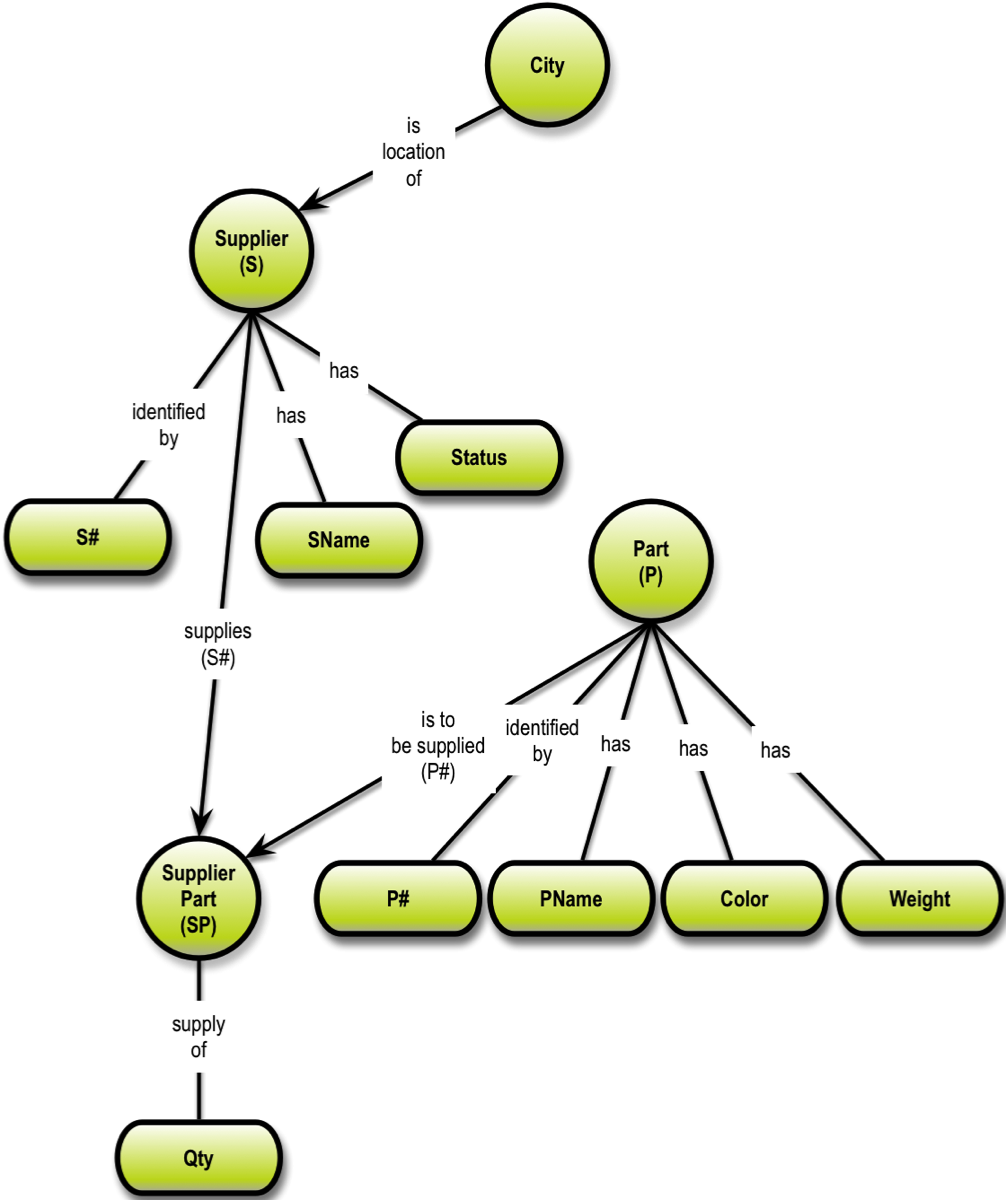Design: Scope and other Decisions
The property level concept maps coming out of the understanding phase still need some consideration.
Let us revisit the Supplier Parts context:
Let us revisit the Supplier Parts context:

Notice that Status is a property of Supplier. First of all this means that the naming could be improved, SupplierStatus would be more appropriate. Another thing is that Status might, in fact, be a business object in its own right. Frequently things like this have both a code (number, whatever) and a value (description). If that is important, it should be modeled at the concept level.
The concept model that is to be delivered is the business requirements of a emerging data model. At this point in time we are not much concerned about data modeling issues like keys, uniqueness etc.
What matters most at this time is scope. Is it the right concepts we push forward to the data model? Is it too much, too little? Can we phase it? Break it down into agile sprints? This is a lot of business decisions and that is was design is all about.
The concept model that is to be delivered is the business requirements of a emerging data model. At this point in time we are not much concerned about data modeling issues like keys, uniqueness etc.
What matters most at this time is scope. Is it the right concepts we push forward to the data model? Is it too much, too little? Can we phase it? Break it down into agile sprints? This is a lot of business decisions and that is was design is all about.
The Importance of Semantics
I strongly believe that semantics is at the core of what data management and data modeling is about. So does Dave McComb of Semantic Arts. He is a warm proponent of semantic technology (the RDF / OWL stack), and I really enjoy his book: The Data-Centric Revolution: Restoring Sanity to Enterprise Information Systems. Buy it using coupon code: 'VizDataModeler' (worth 20 %), at Technics Pub. But remember: There is no one-size-fits-all in data modeling anymore. I think good semantics in property graphs is 80 % and RDF is 20 %. Dave has it the other way around.
You may follow the sequence or explore the site as you wish:
You could also take a look at the book about Business Concept Mapping:
Since it was published in 2012 this book has had more than 50K chapter downloads in research libraries all over the world. This makes it part of top 25% in its category!
Graphs are, actually, used for modeling business facing concept models in front of the design oriented solution models.
Steve Hoberman, the Data Model Rockstar, has written an excellent book about that:
The Rosedata Stone: Achieving a Common Business Language using the Business Terms Model, by Steve Hoberman, buy it using the coupon code: 'VizDataModeler' (worth 20 %), at Technics Pub.
I have developed a design thinking inspired approach, which is described here.
Steve Hoberman, the Data Model Rockstar, has written an excellent book about that:
The Rosedata Stone: Achieving a Common Business Language using the Business Terms Model, by Steve Hoberman, buy it using the coupon code: 'VizDataModeler' (worth 20 %), at Technics Pub.
I have developed a design thinking inspired approach, which is described here.

